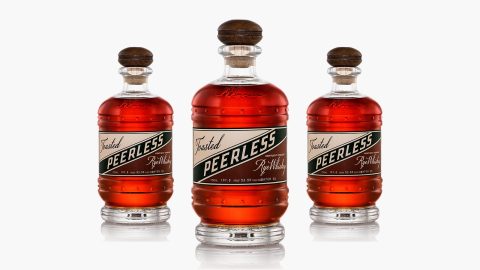Cachaça, pronounced kah-SHAH-suh, is kind of like rum, but you might not want to say that in Brazil. Brazilians are understandably proud, even territorial, of the liquor that goes into their national cocktail, the caipirinha, and much of that love is due to liquor’s storied history. It’s an original, unique to the region, and although Cachaça used to have a lackluster reputation, it’s gaining ground — and acclaim — both at home and abroad.
A Quick Shot:
- Proof: Typically 80; some specialty brands are higher
- Calories Per Ounce: 64
- Big-Name Brands: Leblon, Pitu, Cupacacha, Agua Luca, Novo Fogo, Avuá, Yaguara, Ypióca
- Classic Cocktails: Caipirinha, Coco Batida, Bloody Carioca
- Famous Song: “Cashaca”, Spyro Gyra inspired by a crazy night in Rio, apparently)
- Did You Know? A mid-century James Beard article described slaughtering turkeys drunk on Cachaça, saying the liquor made the birds more relaxed and tender.
A Brief History of Cachaça
Cachaça originated as a slave’s drink, created and consumed by African slaves forced to work in Brazilian mills. Slaves collected the foam floating on top of vats of boiling sugarcane, a substance they called “Cachaça”, and let it ferment. Eventually, the drink become such a part of the slaves’ way of life it was considered an essential component of daily rations.
Cachaça originated as a slave’s drink, created and consumed by African slaves forced to work in Brazilian mills.
The spirit dates at least as far back as the 1500s — predating rum, by the way — with production starting out crude but quickly evolving as Portuguese colonizers saw the spirit’s potential and began importing cognac-style stills and refining their processing technique. The once “poor man’s drink” was soon coveted by the wealthy, and production soared. All that Brazilian nationalism and financial independence didn’t sit well with the colonizing Portuguese, who banned Cachaça on June 12, 1744. Prohibition clearly didn’t last, and now June 12 is International Cachaça Day, an occasion well worth celebrating.
Production, Taste, and Trends
While rum is made using heavy, rich molasses and other sugarcane by-products, Cachaça is based on the pure, unaged sugar cane juice. Because it isn’t given time to mellow and production alters a lot from location to location and maker to maker, Cachaça can be wild and vegetable, smoky or smooth, fiery or gently sweet. The liquid is naturally clear, but some makers add caramel coloring and aged varieties get some color from the barrels.
Cachaça can be wild and vegetable, smoky or smooth, fiery or gently sweet.
That sweetness is limited by law. Producers are only allowed to add up to six grams per liter of additional, non-naturally occurring sugar; any more, and they have to labor their product as “sweetened Cachaça” to indicate the contents have been altered. The Brazilian government has other mandates, too:
- Cachaça must have between 38 and 54% ABV
- Aged Cachaça means that at least 50% of the liquor has been aged for a minimum of a year
Though these categories are unofficial, Cachaça can be casually organized into one of two types:
- White, branca, or prata Cachaça: Considered a basic variety; commonly used in cocktails like the caipirinha; distilled, immediately bottled, and relatively cheap thanks to fast production times
- Dark Cachaça: Considered more premium; aged in wood barrels typically up to three years but as long as 15 years for “ultra premium”; often enjoyed straight up
Though you can now find caipirinhas stateside in Brazilian churrascarias and other Cachaça cocktails in a variety of gastropubs, lounges, speakeasies, and hip steakhouses, 99% of the 85 million cases of Cachaça consumed each year is downed in Brazil. Still, visibility in the US is steadily rising. There are more and more brands entering the market many of which use old-school copper pot stills and adhere to at least the basic tenets of traditional technique.
Try It: Three Cachaça Recipes
Unlike most liquors, Cachaça is very specific in how it’s used, at least classically. You won’t find it used globally in the same few cocktails; while bourbon is perfectly at home in everything from a Manhattan to a mint julep, Cachaça is for primarily for caipirinhas. Everything else is a creative exercise in balancing the liquors unpredictable, brand-specific flavors and creating something proprietary and new. And that’s kind of exciting, isn’t it?
Caipirinha
The classic recipe, perfectly balanced, seriously delicious.
- 2 ounces Cachaça
- 2 teaspoons sugar
- Half a lime, cut into wedges
- Lime wheel for garnish
Place the lime wedges in an old fashioned glass, add the sugar, and muddle thoroughly. Fill glass with ice, add the Cachaça, and stir until combined. Garnish and serve.
Sangria Blanco
A floral Cachaça-based cocktail developed by Naren Young of New York’s Bobo Restaurant
- ¾ ounce St. Germain
- ¾ ounce Pisco
- 2 ounces semi-sweet white wine (Riesling is recommended)
- 1/8 teaspoon fresh lime juice
- 2 ounces soda water
- 3 thin slices each of kiwi, apple, and cucumber
- 2 slices of lime
- 3 grapes, cut in half
- 2 leaves fresh sage
- 1 sprig fresh thyme
Add the first five ingredients to a cocktail glass filled with ice, top with the soda water, and stir. Garnish with the fruit and herbs and serve.
The Cornerstone
This one comes courtesy of Novo Fogo, a stellar brand that produces delicious barrel-aged Cachaça.
- 2 ounces aged Cachaça (Novo Fogo recommended, obviously)
- ½ ounce hibiscus grenadine
- ¼ ounce Fernet Branca
- 2 dashes orange bitters
- Orange peel (optional)
Add all ingredients to a cocktail shaker filled with ice. Stir, then strain into a chilled coupe. Garnish with orange peel.





















































































































